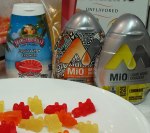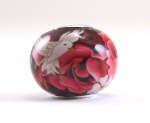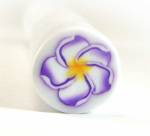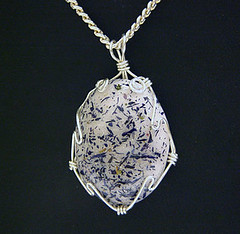Yar, Mateys! Thar be plenty o’ fishes in th’ sea, me darlin’s, so here be a lesson in makin’ yer own sushi. If yer ever visited a sushi bar in port, then ye knows how ‘spensive it can be! Makin’ yer own, it not be hard, even if ye never tried it before. And, it don’t hafta be made with raw fishes if’n ye don’t likes that, so’s doncha worry, Lads and Lasses. Yer welome ter use cooked shrimps or cooked imitation crab legs in it, instead. Sushi can be gluten-free and dairy-free, too, fer those of us wit’ sensitivites an’ such. It be a healthy food, too!
Now this be a long post, but don’t let that intimidate ye! I’m givin’ ye lots of explanations so ye know the why an’ wherefore of what yer doin’ not just th’ how. Once ye read through all this, ye will have a good basic understandin’ of it. Even so — keep in yer mind that this sushi takes less than an hour to prepare. That’s it! Just one hour.
Thar’s some supplies ye be needin’ from th’ stores, now. If ye has none o’ these, then it can be a mite ‘spensive an investment. But the supplies an’ such will pay for themselves over time, in th’ money ye saves from not havin’ ter be eatin’ sushi out if ye be a sushi lover.
If ye happen ter weigh anchor in an Asian port, yer more’n likely ter find these supplies easily — but if’n yer not near any such landfall, doncha worry none. Amazon be a wonderful port o’ call and magically always nearby, and sometimes cheaper’n the store, ‘specially if ye have Prime, so compare prices afore ye shop.
Prep time: 60 minutes (includes cook time for rice, brining for fish, etc.)
Servings: 2-4, depending on the size of your rolls and whether you make side dishes to go with the sushi (miso soup, etc)
Reusable Supplies:
Sushi Rolling Mat (they be inexpensive an’ yer can find ’em at Asian food stores or here).
Flexible plastic cutting mat (found at most grocery stores, looks like this).
Heavy saucepan with a tight fitting lid -OR- an electric rice cooker (preferred, mine looks like this).
Wooden spoon -OR- paddle (preferred, often in a set with wooden spoons. Very inexpensive, look here).
Cookie sheet -OR- flat-bottomed wooden salad bowl (bamboo preferred, looks something like this, which includes the wooden paddle).
Chop sticks if you prefer not using your hands to eat your sushi (this is a nice set, inexpensive, and includes the wooden paddle).
Hand towel (or kitchen towel, yer likely ter have at least one o’ these).
Sharp kitchen knife (carving knife style preferred, but you can use anything you have. Make sure its very sharp).
Cup of cold water and a fork.
Small cups like jello shot cups, Dixie portion cups with lids, silicone cupcake pan liners, etc, one per person. These are at grocery stores.
Saucers or small plates, Something to put your ingredients on individually.
Gallon Ziplock bag or non-metal bowl with lid or plastic wrap (optional, for brine)
Ingredients:
1/4 lb. Fish of your choice (raw or not; raw would be tuna and/or salmon*, most commonly; not raw would be cooked shrimp or imitation crab legs).
1 each of these Vegetables, any combo of: cucumber, green onion, celery, avocado, carrot, daikon — julienne cut (How to julienne: here).
1 Cream cheese block (optional), cut into long cubes; half-frozen helps for cutting, found in grocery stores.
1 Extra firm Tofu (optional), cut into long cubes, found in grocery stores or Asian markets.
1.5 to 2 cups Sushi rice (short or medium grain only; common brands are Calrose, Kokuho, Nishiki, found at large grocery stores, Asian markets, or here).
10 Tbsp Seasoned rice vinegar (found at large grocery stores, Asian markets, or here).
1 pkg. Nori (seaweed sheets, can be found at large grocery stores, or here).
1 cup each Sake and Mirin (optional, for seasoning raw fish; can be found at large grocery stores, Asian grocery, or you can use this, here).
1/4 cup Kosher salt (optional, for brining raw fish; can be found at large grocery stores).
2 Tbsp. Sugar (optional, for brining raw fish; can be found at grocery stores).
2 cups ice (optional, for brining raw fish).
Soy sauce for dipping (regular or gluten-free, can be found at large grocery stores, Asian markets, or here).
Unagi sauce for dipping (can be found at large grocery stores or Asian markets, or here).
Wasabi for dipping (paste or powder, NOT mustard! Can be found at Asian grocery, or paste here and powder here.).
*About raw fish: You really want the highest quality in your Tuna and Salmon that you can get. You’re only buying about 1/8 pound per person, so you won’t buy a lot unless you plan on cutting and freezing it yourself. Ideally, get your fish at a seafood market. But if you don’t have access to that, or it’s too expensive, then your local fish counter at a large grocery store will do. Again ideally you want it as fresh as can be, and the fish market will usually have fresh caught salmon at least. Get wild caught, not farm raised, and get “grade A” or “sushi grade” if you can. If not… get what you can get.
The fish counter at the grocery store is most likely gonna have “previously frozen”. Ask them to cut you a thin slice so you can feel it. You want to do this to ensure the fish you buy is NOT slimy, mushy, or sticky. If so, don’t buy it! The fish should feel firm, moist but not slimy, and if you squeeze it a little bit it shouldn’t mush in your fingers, it should have some springy-ness to it. It should smell fresh, not sour or “fishy”.
We will be putting the fish in a brine. This doesn’t really cook the fish, but… sortof. It kills off any yuckies that might exist on the fish, has a preservative quality to it, firms up the fish, and gives it more flavor. Then we’ll be putting it in a sake & mirin mixture to marinade it. OMG. So good.
Directions:
Sushi’s all about dat rice, ’bout dat rice, ’bout dat rice…. ….*ahem*…..
The number one important thing about your sushi is your rice. Not your fish. Make sure you have that firmly in mind! If you think of Sushi as sortof a Japanese version of a sandwich, then you can wrap your brain around the idea that the fillings will come and go, but the bread (or in this case, rice) is what ties it all together.
Now there are different kinds of sushi and we could discuss those ALL DAY. But today is a basic introduction to what is called “Maki” and it’s what most people think of when they think of sushi. There are different kinds of Maki, but what we’re gonna focus on here is called “Futo Maki”, which is a roll that has Nori on the outside, and rice, vegetables, and fish (or meat) on the inside. Remember: Japanese sandwich. Just in a jellyroll form. Got it? Okay.
Step 1. Start your brine, if you are doing Tuna and/or Salmon rolls. (If you are not doing raw fish, skip to step 2)
In a medium sized non-metal bowl or gallon ziplock bag, mix together the following except ice:
4 cups water
1/4 cup kosher salt
2 Tbsp. sugar
2 tsp. Seasoned rice vinegar
2 cups of ice
Stir until the sugar dissolves, then add ice. Trim away any skin and fat from the raw fish, if any. Then add them to the bowl. OR, you can upgrade your sushi by lightly scoring the top and bottom of the fish fillets with a very sharp knife, in a shallow crisscross pattern, before placing them in the bowl or bag. This allows more of the brine (and later seasoning) to get into the fish. Just don’t cut deeply or it’s gonna be hard to slice the fish later. Place the bowl or bag in the refrigerator for 40 minutes. (Ideally, you’d do this overnight. But if you’re like me and usually decide you want sushi at the last minute, the short brine time is fine.)
Step 2: Make the rice
Measure the amount of rice according to the directions on the package, and place it in your pan or rice cooker. Swirl lukewarm water into the pan, and rinse the rice 3-4 times. If you have a fine mesh colander, you can do this better but using a pan is fine. Just be careful when pouring off the water. This rinsing removes excess starch (yay!) so that the rice doesn’t end up too sticky. Ideally, you can upgrade your rice by setting the rinsed rice aside for an hour to drain. But I rarely do this because I rarely plan that far ahead when making sushi.
Add the amount of water that your rice package calls for, and then turn your rice cooker on or bring your rice to a light boil in the heavy saucepan on the stove. Once the pan boils, turn it down to low and put the lid on tight. Cook for 20 minutes or the time the rice cooker uses.
Step 3: While the rice is cooking…
–Julienne your vegetables and place on a divided tray or saucers
–Cut your tofu and cream cheese into long cubes, add to tray or saucers
–Prepare your table (this is how I prepare mine, for two people. Everyone rolls their own sushi, makes the process go much faster).
Step 4: Marinade the fish and season the rice:
Prepare this marinade for the raw fish: equal parts Sake and Mirin. Stir a bit, place in another plastic bag or non-metal bowl. When the timer goes off for the fish, take them out of the brine and rinse well under cool water. Then transfer them to the marinade and return the bowl or bag to the refrigerator until just before you’re ready to make your rolls.
When the timer for the rice goes off, remove the rice from the heat (do not let the rice cooker go to warm; turn it off). Remove the lid, then place a clean dish towel or kitchen towel over the pot, then place the lid back on top. This will help absorb excess steam. Set your timer for 15 minutes.
After the timer for the rice goes off, pour 1 Tbsp. seasoned rice vinegar into the wooden bowl and spread it around the sides and bottom with a paper towel so the hot rice doesn’t stick to the bowl. Then gently loosen the rice from the pot or rice cooker by cutting and folding the rice with the paddle. DO NOT STIR. That’ll make the rice sticky and messy. Pour the rice into the moistened bowl, then pour in 6-7 Tbsp. of seasoned rice vinegar over the rice. Fold that into the rice, again without stirring. Once the rice vinegar is mixed in, fan the rice for a minute or two to speed up the cooling process. Ideally you want the rice to be room temperature.
Step 5: While the rice is cooling…
–Take the fish out of the marinade and pat dry. Slice the fish as thin as you can with a very sharp knife, going across the grain. Place slices on a tray.
–Mix your wasabi and soy sauce, if you like them mixed together. Wasabi paste and powder are very hot to the taste, but the heat is short lived. That being said, a little does go a long way. If you’re using paste, start with a small amount of soy sauce into the bottom of your dipping cup, then add small bits of wasabi and stir to taste — you may even want to do this with a toothpick if you don’t like things very spicy!
If you’re using wasabi powder, then mix a tiny amount of water in with the powder until a thick paste forms. Then follow the mixing with soy sauce procedure.
Of course if you don’t like wasabi at all, you can completely skip that part and just use the unagi sauce (sweet tasting) and/or soy sauce. Personally I use them all, and I like my wasabi dipping sauce hot enough to make me catch my breath and my eyes water.
Step 6: Make your sushi rolls
This is an excellent video on how and why to roll sushi the different ways. My only caveat is that I’m trying to keep my carbs down, so I use about half the rice that is usually done. I spread my rice out with a wet fork (hence the cup of water with a fork on my table setting). Also, I usually roll mine with the rice on the inside and the Nori on the outside. It’s just a lot less sticky and messy that way, IMO.
Once you’ve made your first roll, use the sharp carving knife to slice the roll into 4-6 slices. (Dampen a paper towel and wipe the blade before and after you slice, that makes it alot easier to cut through the Nori.) Generally I make and eat my rolls one at a time. I’ve learned from experience that my eyes are often bigger than my stomach, and I get filled up on about 3 rolls (and that’s including me using half the rice most people use). Sushi is surprisingly filling– so there’s no waste if you make and eat your rolls one at a time.
Let me know if you make your own sushi, whether it’s for the first time or if you’ve been making it for years!
 These liquid water enhancers are the kind that you squirt into your water bottle so that you can control the intensity of the flavor of your water. Mio was the first brand on the market, but there are a lot of other brands (including house brands) that provide a wide range of not only flavors, but also options like caffeine and vitamins. The sweeteners vary from brand to brand, aspartame to sucralose to stevia, so you have your choice about which sweeteners you prefer.
These liquid water enhancers are the kind that you squirt into your water bottle so that you can control the intensity of the flavor of your water. Mio was the first brand on the market, but there are a lot of other brands (including house brands) that provide a wide range of not only flavors, but also options like caffeine and vitamins. The sweeteners vary from brand to brand, aspartame to sucralose to stevia, so you have your choice about which sweeteners you prefer.

 I love Tiki Culture/Polynesian Pop. It was a loosely island-influenced decorative style, popular in the 1940’s to 1970’s. The Beachcomber, Trader Vic’s, Disney’s Polynesian resort and Enchanted Tiki Room — these were all Southern California destinations that popularized the movement. People were turning their spare rooms into tiki lounges; motels had sweeping peaked roofs and imitation thatch; restaurants were investing in rattan and bamboo. Tiki bars were popular across the country. Hawaii became a state in 1959, and by that time the islands had already been growing in popularity as a tourist destination. Gilligan’s Island, Elvis’ Blue Hawaii, the theatre production and then film, South Pacific– these were all tv shows and movies that embraced this loose interpretation of Island Life.
I love Tiki Culture/Polynesian Pop. It was a loosely island-influenced decorative style, popular in the 1940’s to 1970’s. The Beachcomber, Trader Vic’s, Disney’s Polynesian resort and Enchanted Tiki Room — these were all Southern California destinations that popularized the movement. People were turning their spare rooms into tiki lounges; motels had sweeping peaked roofs and imitation thatch; restaurants were investing in rattan and bamboo. Tiki bars were popular across the country. Hawaii became a state in 1959, and by that time the islands had already been growing in popularity as a tourist destination. Gilligan’s Island, Elvis’ Blue Hawaii, the theatre production and then film, South Pacific– these were all tv shows and movies that embraced this loose interpretation of Island Life. I just turned 50 years old, but I certainly don’t feel my age. I lost a bunch of weight in the last few years, started eating better, lifting weights and exercising, got into the sport of disc golf. It has made me stronger and healthier than I’ve been my whole adult life. So I wasn’t interested in having the traditional “over the hill” party. No way! What I wanted instead was a luau. A luau with a tiki bar.
I just turned 50 years old, but I certainly don’t feel my age. I lost a bunch of weight in the last few years, started eating better, lifting weights and exercising, got into the sport of disc golf. It has made me stronger and healthier than I’ve been my whole adult life. So I wasn’t interested in having the traditional “over the hill” party. No way! What I wanted instead was a luau. A luau with a tiki bar.






































